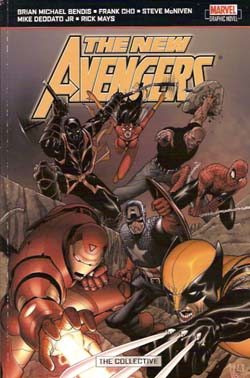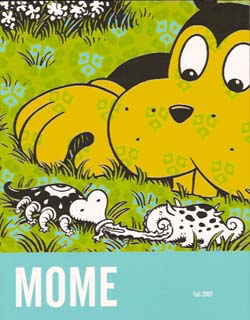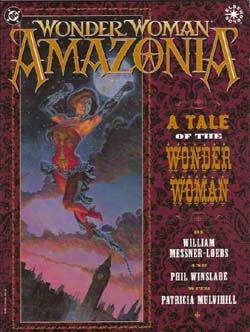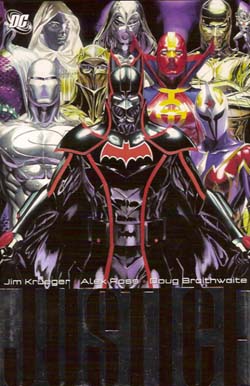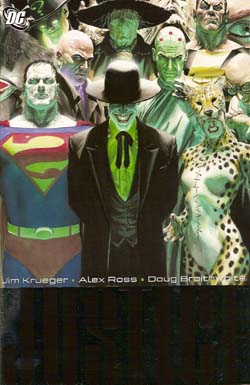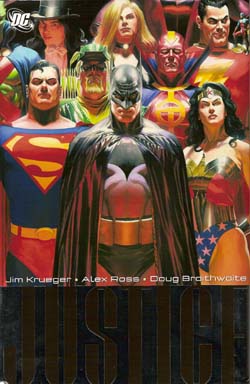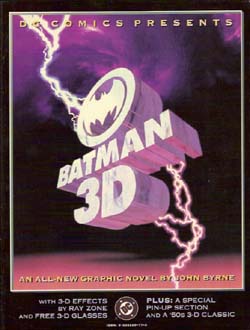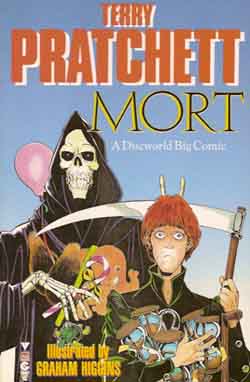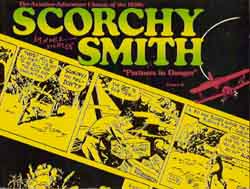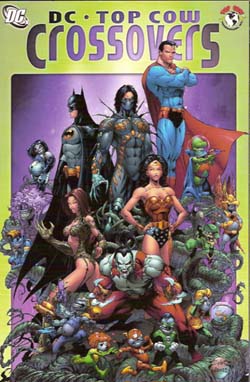
By various (DC Comics)
ISBN13: 978-1-84576-585-9
Most comics these days – at least from the larger publishers – have artwork of good to great quality. It’s no surprise, as there are a lot of artists, new and experienced, chasing relatively few jobs. Unfortunately it’s not so easy to drive up the quality of writing, and often people who can draw are just assumed to have the equivalent skills necessary to tell a tale well.
A sobering case-in-point is this collection of tales combining the biggest-guns of the oldest surviving comic book empire and one of the newest successes, which originally saw print as The Darkness/Batman, JLA/Witchblade, The Darkness/Superman #1-2 and JLA/Cyberforce between released in 1999 and 2005 and in which plot and character were continually sacrificed to the sales potential of empty fights and posturing.
The Darkness is Jackie Estacado, a Mafia hit man who has complete control of a supernatural force that manifests as demons who carry out his every wish and command. He’s in Gotham City to expand the Organisation’s power-base. And of course, Batman is not going to let him. Irrespective of Estacado’s self-doubts and avowed desire to change, there is no way on Earth an obsessive like Batman would allow him to leave without being sure that he would never kill again. But he does…
This is the responsibility of a huge cast of contributors including scripters Scott Lobdell and Jeph Loeb and artists Marc Silvestri, Dave Finch, Clarence Lansang, Joe Weems V, Danny Miki, Victor Llamas, Batt and Livesay but despite looking glitzy this is rushed and vacuous fare.
Written by Len Kaminski and illustrated by Mark Pajarillo and Walden Wong, JLA/Witchblade is a tale of Sara Pezzini, a New York cop bonded against her will to a supernatural, semi-sentient ultimate weapon. The Witchblade is as much her prisoner as her tool but when it escapes her control and possesses Wonder Woman, not even the Justice League can stop it from destroying the Universe.
Still looking for new territory Jackie Estacado hits Metropolis (are they really telling us that Superman’s home-town is more tempting than any other US city? Seriously?) where he starts killing mobsters, causing a gang-war. The second-rate threats of Metallo and Lois and Jimmy as hostages (because that’s never happened before) are enough to convince the Man of Steel to join forces with The Darkness and once again the mass-murderer gets off with a warning to leave town. The Darkness/Superman is written by Ron Marz with art by Tyler Kirkham and Matt “Batt†Banning, who should know better: I certainly do.
JLA/Cyberforce by Joe Kelly, Doug Mahnke and Norm Rapmund is by far the best of these unlikely team-ups. Here a team of cybernetically augmented individuals, once corporate mercenaries, wander the world looking for their lost leader, now possessed by an awesome alien force and a foe of all life. Their search leads them to a lost tomb deep below Budapest where the dead walk again, a threat certain to catch the attention of the Justice League.
This is a tale with some thought behind it for the fans of both series, a credible use of the characters and even some welcome and plausible character interaction. It’s nice to know that some one still recognises the value of a Story as well as a Property.
There will always be inter-company team-up comics as long as there’s more than one publisher. Let us hope future commercial exploitations realise the difference between comic strip art and comic strip-mining. One for collection completists only I fear.
© 1999, 2000, 2005, 2007 DC Comics. All Rights Reserved.
